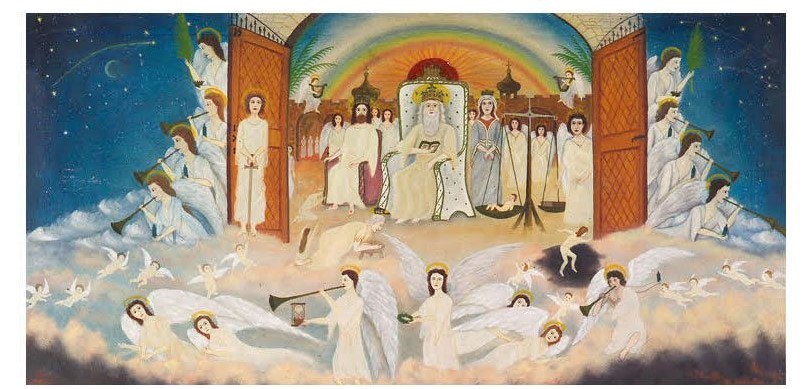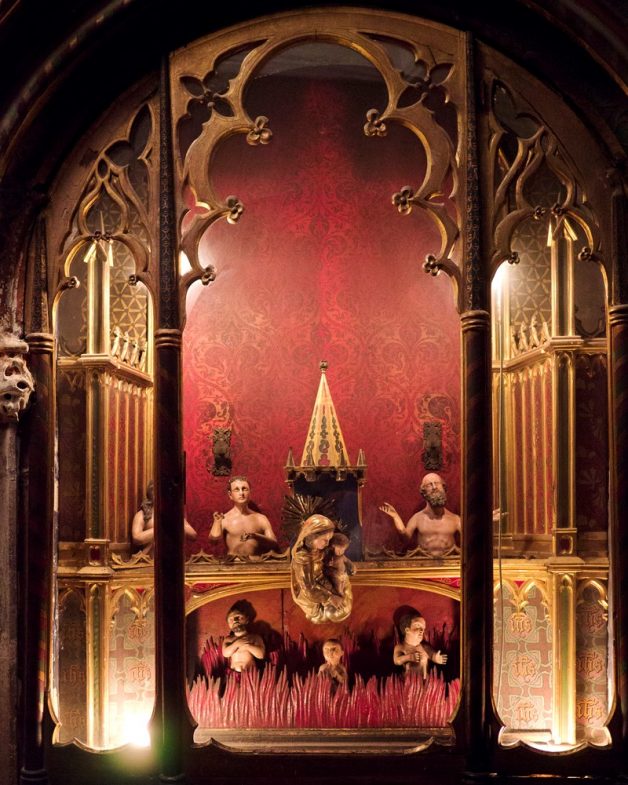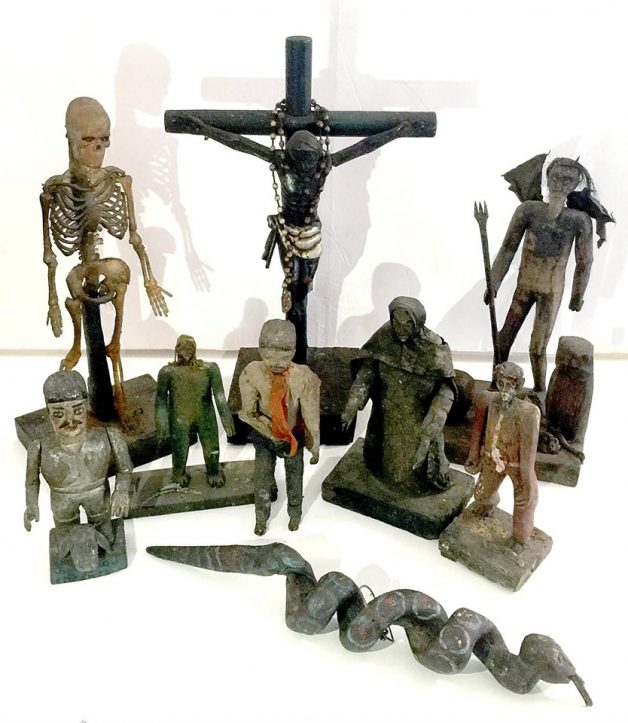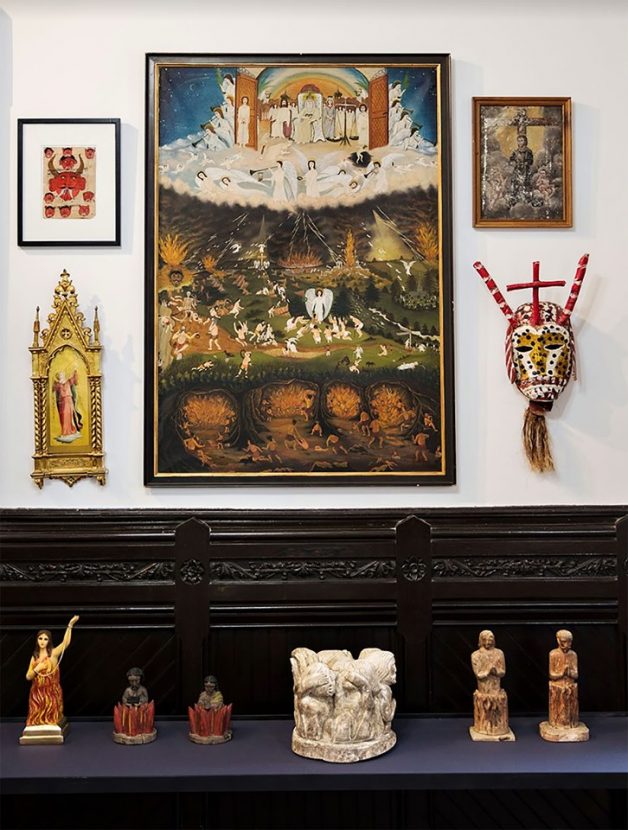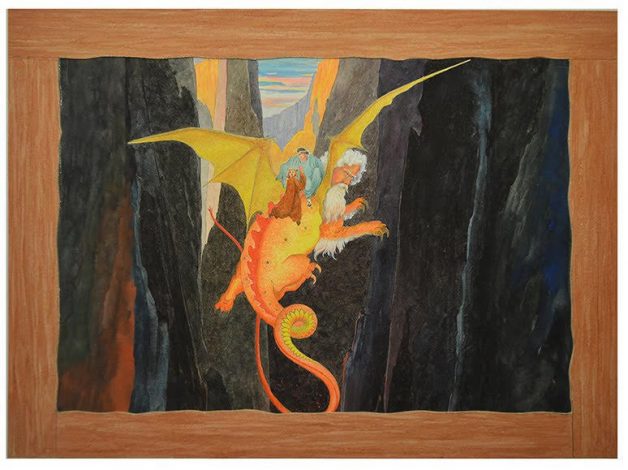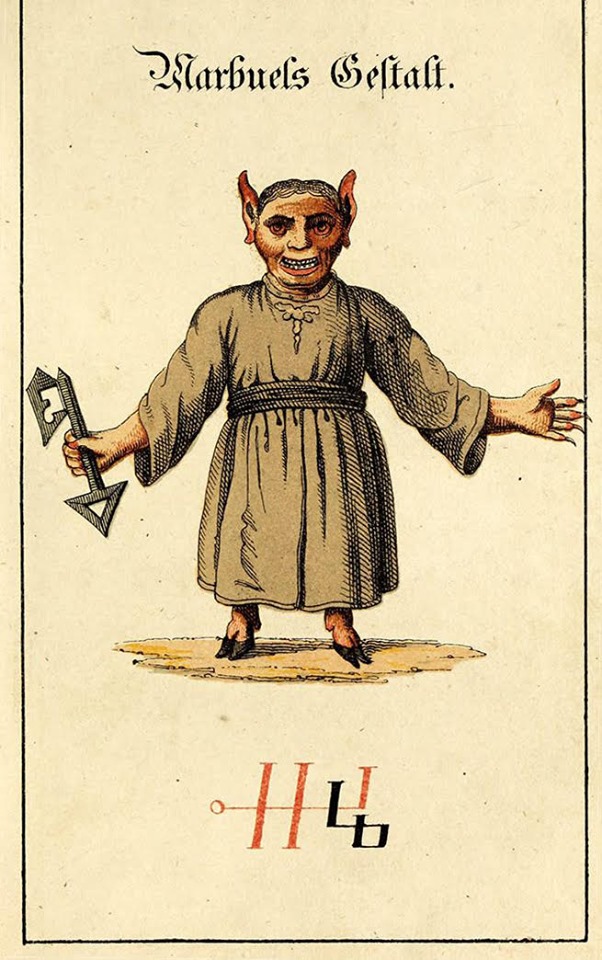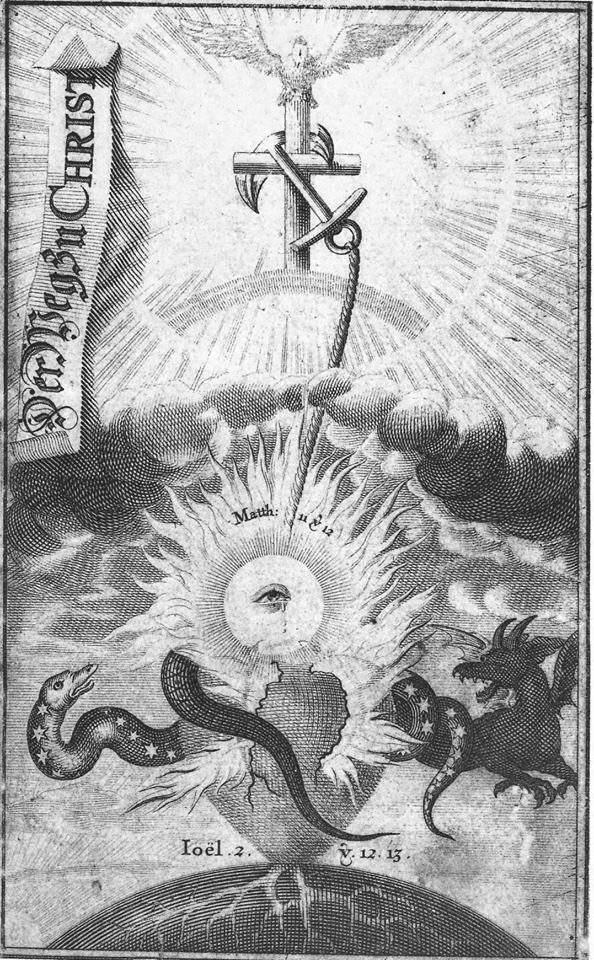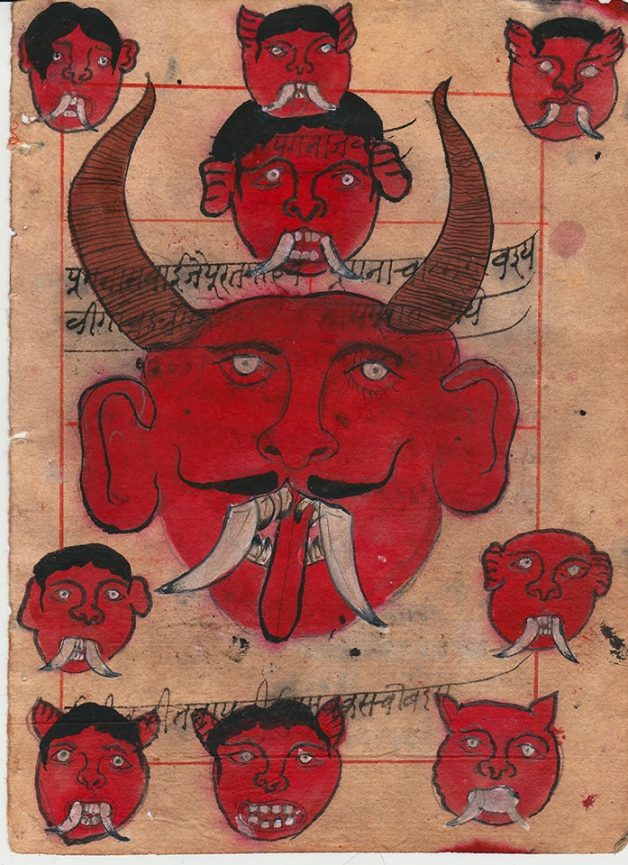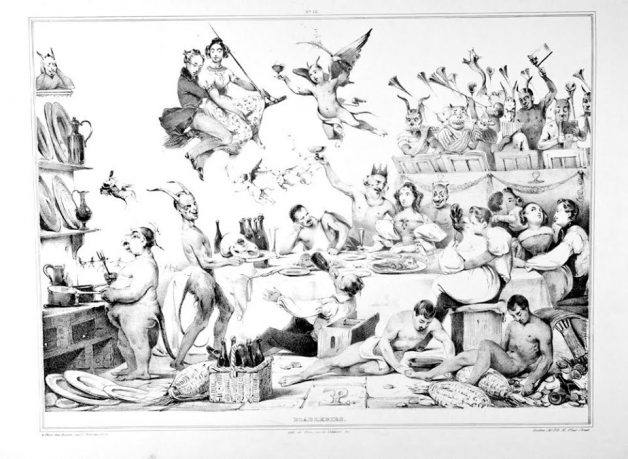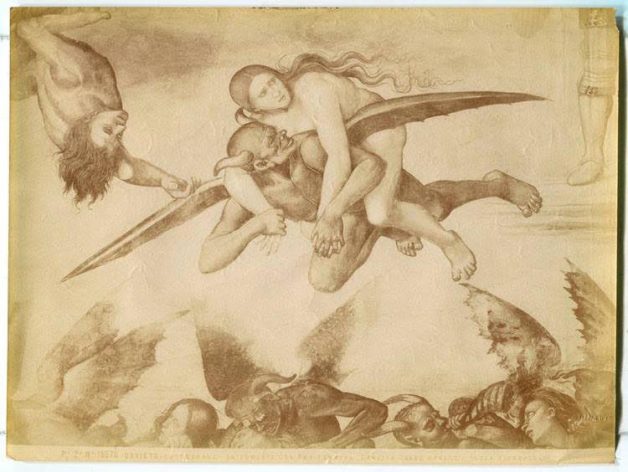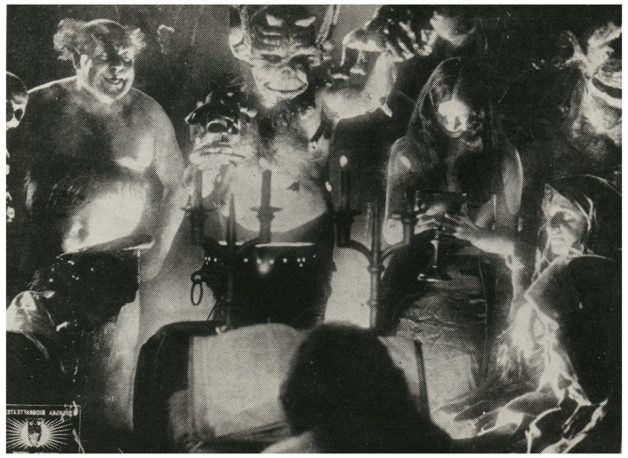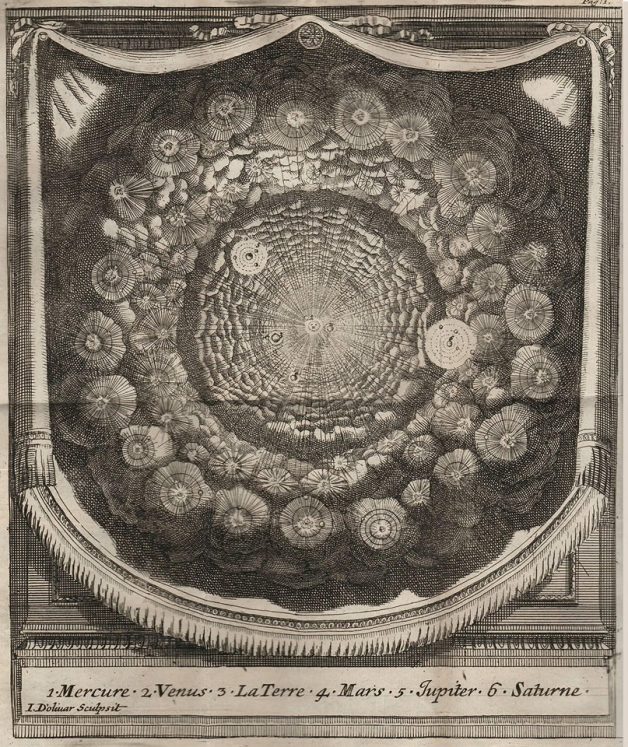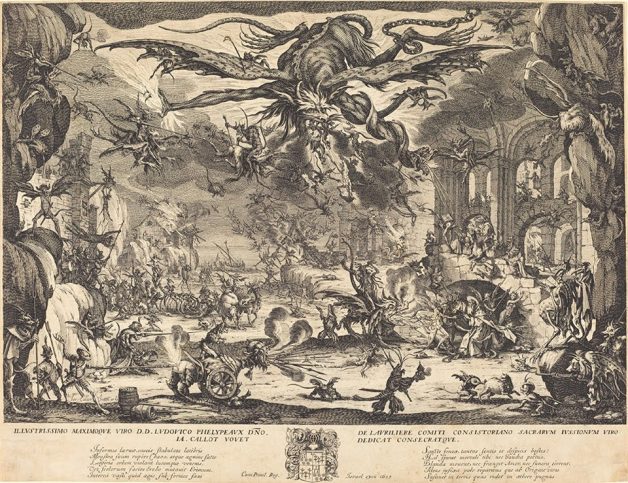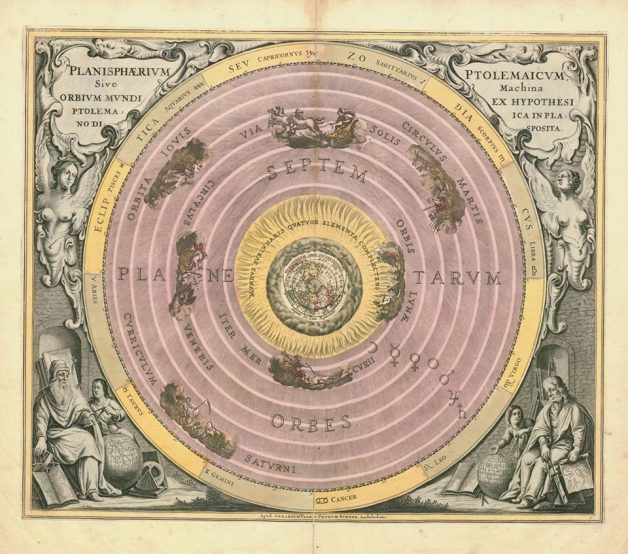HEAVEN, HELL, AND PURGATORY: VISIONS OF THE AFTERLIFE IN THE CATHOLIC TRADITION
Morbid Anatomy, beloved purveyor of the arcane, whose most recent incarnation was the quirky Brooklyn-based museum that was shuttered in early 2017, has taken up temporary residence at Green-Wood in 2019. The historic Fort Hamilton Gatehouse will house the exhibition, Heaven, Hell, and Purgatory: Visions of the Afterlife in the Catholic Tradition and offer its picturesque attic space to Morbid Anatomy’s extensive library and collection of ephemera. Reprising its wildly popular public program series, the Morbid Anatomy team has curated the exhibition, plus a series of conversations, lectures, and events focused on the intersections of art and medicine, death and culture.
Heaven, Hell, and Purgatory
Visions of the Afterlife in the Catholic Tradition
April 20 – June 30, 2019
In Catholicism, when a member of the faith dies, their soul awaits judgment before it can be reunited with the resurrected body. The unrepentant who have perpetrated the gravest sins descend into Hell, while the most pious are delivered safely to the eternal paradise of Heaven. Most, however, find themselves in Purgatory. In this liminal space—a sort of temporary hell—souls are purged of their sins until they have attained the purity necessary to earn their heavenly reward.
The concept of Purgatory is contentious. Originally developed in the eleventh and twelfth centuries, it rose to popularity in the fourteenth century in response to the mass deaths wrought by the Black Plague. Disagreements about Purgatory contributed directly to the birth of Protestantism. One of Martin Luther’s major points of contention in his Ninety-Five Theses of 1517 was the purchasing of indulgences—papal grants promising to shorten or cancel a person’s time in Purgatory. Once sold as ubiquitously as lottery tickets, profits were used to fund various projects including the construction of St. Peter’s Basilica in Rome. Today, Purgatory is recognized only in enclaves of Europe and Latin America, however, the concepts of Heaven and Hell remain widely accepted within the Catholic ethos.
This exhibition explores how Catholic visions of the afterlife have stirred the popular imagination and served to steer the collective moral compass for centuries. The art, artifacts, and objects of material culture on view are drawn from The Green-Wood Historic Fund Collections and the greater Morbid Anatomy community.
“Heaven, Hell, and Purgatory: Visions of the Afterlife in the Catholic Tradition” and the Morbid Anatomy Library are free and open to the public at the Fort Hamilton Gatehouse on Saturdays and Sundays, 12 –5 PM, from April 20 to June 30. To visit outside of these hours, email events@green-wood.com.
see link here @: Heaven, Hell, and Purgatory Visions of the Afterlife in the Catholic Tradition

